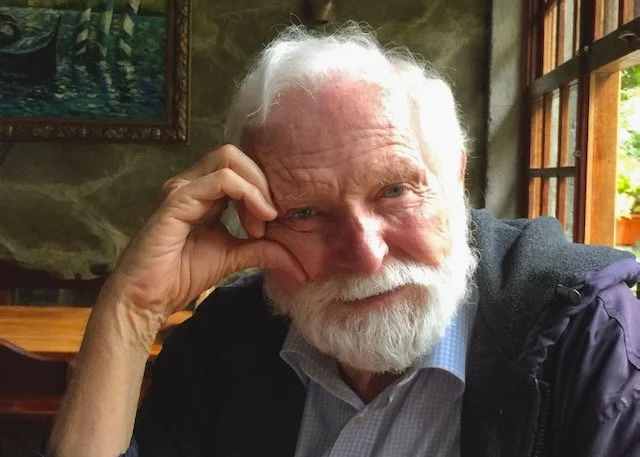Beyond the Yellow Border
“FROM NOW ON IT’S WALL STREET AROUND HERE!”
It was the National Geographic Society president speaking to a gathering of staff members at the end of the year. I had been at the National Geographic for more than 33 years, and I had seen the membership climb up to 11 million. Surveys indicated that each issue was read by an average of four people. Then slowly, membership began to decline. Highly paid executives were brought in to find a solution, and before long staff members over a certain age with enough years of service were offered a very attractive early retirement package. I accepted, and a new fork in the road of life beckoned.
Over the years, I had spent a lot of time in Alaska and in Canada’s Yukon territory. So had Marilyn and my children, Tim and Tammy. But the north still called me. I accepted an offer by the native corporation in Kodiak, Alaska to document their way of life.
Once again Marilyn and I headed north, spent the summer there, and later went back to visit friends in Wrangell-Saint Elias National Park. We bought a small piece of property in the heart of America’s largest national park and eventually decided to build a cabin there. Marilyn’s brother Rolly, his wife Katherine, a couple of their friends from Louisiana, and a friend of mine in Alaska came to help. Only once did we have a serious problem with a very cantankerous brown bear. We spent many months there over the coming years.
Eventually, that wandering star called again. We visited Panama and decided to come back and spend an entire year. In the western mountain highlands, we found a place near the flank of Panama’s highest volcano, Volcan Baru, bought a 7 ½ acre coffee farm, and had a house built. We immersed ourselves in the Latino culture in a location where we could literally have breakfast along the Pacific, have lunch on the Atlantic side of the Peninsula, and then drive back to have dinner along the Pacific side again.
When I lost Marilyn to a heart attack a few years after our 50th anniversary, I was shattered. Several months later my brother and his wife, who was originally from Columbia, were making a trip back to decide if they wanted to retire in Colombia. They asked me to join them. I did, and although I live in Panama to this day, my trip to Columbia opened new pathways that lead me to make new friends and to travel to areas I had not yet seen.
Then came the virus. Suddenly the borders all slammed shut. Airports and ports were all closed. Commercial flights were canceled. The government decreed a strict lockdown for three months. What does a lifelong traveling photojournalist do in a situation like this? Look at the options and find a way forward.
